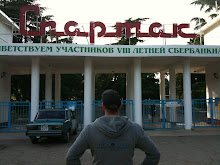Wednesday, May 9, 2012
smooth is fast, soft is strong
Kuroda sensei here executes ukimi which has a few translations but herein its a forward tumble where you really get under yourself.
Inoue executing a Seoi-nage with a deep squat posture.
This is more common among Asians and though I've heard it said its because of generalized proportions of leg-length etc My feeling/suspicion is that Asians generally don't sit as much as Westerners do. Like, on chairs and such as opposed to kneeling in seiza or the third world squat where you'll see old men/women waiting at the bus stop able to squat deeply, resting their butt on heels. Old, even young Westerners cannot even manage to do this and I blame chairs! No, sitting on stability balls does not count...
Anyhow, think of it like this: Kuroda's ukimi converts into Inoue's posture -as Tori-(the guy executing the throw) and the uke (guy that Inoue is throwing) is executing ukemi The tighter arc powers the looser arc.
As you get more relaxed it will become easier to execute this throw. It does not require strength, only good range of motion, stability in maintaining posture and a sort of relaxed-elastic power; which is simple in idea but will take time to develop. The details matter. Also, good breakfall/Ukemi skills matter which is why we're spending so much time with them. Not just for the sake of falling correctly and safely but because its the best way to develop the specific, smooth/soft power we'll need.
Consider expanding from that deep squat a bit, remaining relaxed enough -just enough- that you don't lose posture and can support the momentary addition of uke's weight. Using the correct angles and directions of push/pull etc etc you can be more upright and execute very smooth, elegant throws such as the man-himself here: Katanishi-san
Thursday, May 3, 2012
I've been holding back on you guys. I needed to formulate some things before I was ready to restart this blog...
little circle drives big circle
ukimi=little circle: http://youtu.be/JwHX6kR_Se0
ukemi=big circle: http://youtu.be/iKE7WS8N3Kw
Inoue puts it all together: http://youtu.be/JXFUrzBtsrY
Think of it as tori is the little circle and uke is the big circle.
Super-geek-time. Timmy goes thru his mechanics and note that his first movement is basically backward, though he's falling forward. That is the contradictory power we touch on. He falls into the direction opposite to his loading, in particular re: his hips. From there its a matter of the small circle@center (hips) projecting out to the big circle (hands) to generate the power.
http://youtu.be/wnPFSDTU_ng
A pitcher in MLB has an advantage in stepping off his mound. You can't really increase power as you're only "so strong" and you can't increase speed as your limbs+body will only go so fast but what you really can change is the mass which stepping down off the mound changes dramatically. The relationship between height of drop and mass is something like 2-3 times greater. What is the point?!? It's all down power!
Look again at Inoue, what he does is go from a position of stability and drops ~in a relaxed transition~ into another position of stability. Those of you who were at the last class saw how I launched Judd with this tight circle, tightly crouched squat. It had very little strength involved in the release and in the third try where I could barely control my own over-rotation I was completely committed to the mechanics.
Notice I said "mechanics" not "throw" that is where we need to work from. The throw is a causal relationship. The mechanics are deterministic, how you move is everything. It's the only thing. So, therefore, back to breakfalls! Ukemi! Ukikmi!
Subscribe to:
Posts (Atom)
